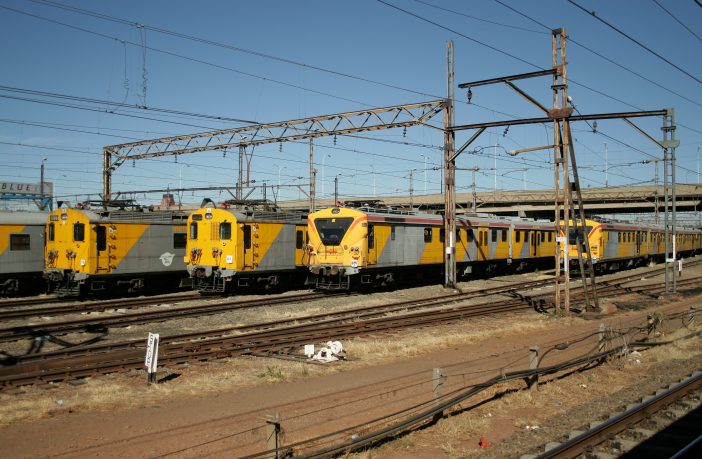- Railway operators can now feasibly connect solar plants to traction substations.
- A railway station in the town of Aldershot, in southern England’s Hampshire county, now hosts a 30 kW solar plant.
- The project, which is the first of its kind, serves as a traction current provider for the U.K. railway system.
U.K.-based climate change charity 10:10 developed the Riding Sunbeams’ “First Light” demonstrator solar array in partnership with Community Energy South and national rail infrastructure operator Network Rail. The project should be connected to the railway within the next two weeks, according to Leo Murray, director of innovation at 10:10.
In a recent chat with pv magazine, Murray said Riding Sunbeams began as a project in 2015, when 10:10 was working with a community energy group in Sussex to connect a 5 MW ground-mounted solar farm. “What we found was that there was no grid capacity at the project’s location, which is a real problem of big areas across the U.K.,” he said. “What we realized, however, was that the solar project was located next to the railway. We also saw a giant triphase converter and we asked ourselves, why we can’t just connect into that?”
Perfect client
In the end, 10:10 built the solar array in another area with an available grid connection, but a new idea had started to take shape. Now that solar is almost completely unsubsidized in Great Britain, with bilateral PPAs for big solar projects, it has become a much more concrete opportunity.
“Supplying an industrial customer with solar power behind-the-meter in the U.K. is now becoming feasible, but that counterpart must be very special,” Murray said. “It must be someone the company and the bank can trust, and that will still be there in 20 to 25 years buying your electricity. Even if you get a big factory as a client, it is very difficult to be confident that it will be using power at the same rate it is doing today.”
Railways, however, are perfect clients, Murray said.
“In the U.K., railways already use 1% of all electricity production, which is a lot of power,” he stated. “They are clients with huge demand, but they also have a distributed demand. That means that, effectively, they operate like a shadow grid.”
The DC railway network in South London alone has over 500 traction substations, each with the power demand of a small factory. These are supplied by power supply points in the railway network’s distribution system.
“What we have been working on over the past year was to find a way to connect into this traction system to supply power directly to the trains, with no grid spill,” Murray said. “Part of it will also be used for lights and signalling, but nearly all of it will be used to make trains move.”
A solar plant can theoretically be connected to any traction substation and supply from five to 10 km of the track in either direction. But if you don’t have any trains accelerating in that section, you have no demand, Murray said.
“But around London, and in a very busy track section, traffic will always be intense,” he added. “London to Brighton is the busiest route in the U.K., and there is always a train accelerating, on every track section, even on a quiet Sunday afternoon.”
Storage option
There are also points in sections of track where you don’t even need storage, due to high train traffic. “We want to introduce storage into this picture, although we still haven’t done anything of the sort yet,” Murray said. “Now we are just keeping it simple, and we are connecting a solar power supply to the traction system with all of the electricity being used.”
The technical potential of this technology without storage is about 20% of the total traction load on the DC traction networks in the U.K. “We actually think, however, that the realizable potential is about 10% of the total traction load,” Murray said.
The solar technology is completely normal, Murray claimed. “What we have is a unique assemblage of the power electronics equipment,” he said. “That includes a regular inverter which is used to connect the power plant to the distribution system normally, along with a range of other things, so that there is remote control on the railway side, that there are critical safety functions, as it is really important that a direct solar supply point doesn’t interfere with safety.”
However, it is very difficult to push innovation in the U.K. railway sector, like in many countries, because it is so heavily regulated. “Everything is subject to the industry codes, and equipment must be always accredited,” Murray said.
The most novel aspect of the project, which was funded by Innovate U.K. and the Department for Transport, is the idea itself. “It is nothing we can patent,” Lewis acknowledged. “As for now, however, we are the only people in the world who know how to do this. But, ultimately, we are spending public money on this trial, and eventually this will bring the creation of a new industry code, which specifies how to connect a direct supply to the traction system of the railway in the U.K.. Once we have established this can be done here, it can been transposed everywhere in the world, including in countries like India.”
In addition, 10:10 plans to bring its know-how to other countries with DC railway networks, such as Belgium and Spain. It has already started to implement another pilot project in southern Wales. Murray also claims that the charity has completed six feasibility studies for MW-sized community solar farms in southern England.
“So we have got six sites that are lined up for the construction of solar arrays, which could be potentially linked to the railway,” Murray concluded.
Author: Emiliano Bellini
This article was originally published in pv magazine and is republished with permission.















